STANTON, Westport, County Mayo
After years of wanting to know where he came from in Ireland, and just two weeks before his 60th birthday, we struck gold and found the Parish where the ancestors of the Stanton family, Edinburgh branch, had originated.  The Parish is Oughoval and is situated in the small town of  Westport, County Mayo on the West Coast of Ireland.http://www.youtube.com/watch?v=8UxjzfY8Jbg&feature=related
WITH A SPECIAL MENTION HERE to Dave Meikle, Denis’s greatest friend, who offered to do all the driving and take him back in search of his family roots. Â So Davie, we salute you and Kathleen who had to put up with us for the week.
http://www.youtube.com/watch?v=PHYr_xpeoKk&feature=related
http://trees.ancestry.co.uk/tree/18269627/family?fpid=635637505#pedigree=635637585
Westport, County Mayo is the ancestral roots of the family.  The Stanton family are in good company because Grace Kelly has her roots in the nearby village of Newport, County Mayo, where her grandfather was born.  In the nearby village of  Cong in County Mayo there is a very special museum.  It is to commemorate where the Quiet Man was filmed and they have replicated the cottage as a museum
http://www.360cities.net/image/westport-church#0.00,0.06,70.0Westport originates and gets its name, in Irish, from a 16h Century castle -Â Cathair na Mart (meaning: The Stone Fort of the Beeves) – and surrounding settlement, belonging to the powerful local sea faring O’Malley Clan, who controlled the Clew Bay area.http://www.youtube.com/watch?v=WZef9cjbkm0&feature=related
The original village of Cathair na Mart existed somewhere around what is now the front (East) lawn of Westport House. It had a high street, alleys down to the river and a population of around 700[7]. It was moved to its present site in the 1780s by the Browne family of Westport House, who also renamed it Westport.
Westport is designated as a heritage town and is unusual in Ireland in that it one of only a few planned towns in the country.[8] The design of the town is attributed to James Wyatt, a famous English architect. He also completed Westport House, the stately home of the Marquess of Sligo and designed its dining room. Westport House had originally been built byRichard Cassels, the German architect, in the 1730s, on the site of the original O’ Malley Castle. The dungeons of the O’ Malley castle still remain. The most notable feature of James Wyatt‘s town plan is the lovely tree-lined boulevard, the Mall, built on the River Carrowbeg.
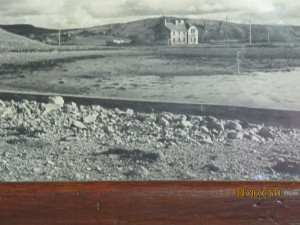
This large house on the coast at Westport was owned by the Stanton family. They ran it as a spa resort
In 1951 John Ford’s greatest movie “The Quiet Man” starring John Wayne, Maureen O’Hara and Barry Fitzgerald was made. It was set in the beautiful west of Ireland with filming being centred in the village of Cong on the Mayo-Galway border.
Quiet Man Cottage Museum
 Quiet Man Cottage Museum is a novel concept which will give the visitor a total Quiet Man experience as if they were actually ‘on-set’. Located by the river at Circular Road, Cong, between actual locations used for the filming, the ground floor of the cottage has been designed as an exact replica of ‘White-o-Mornin’ Cottage.
Quiet Man Cottage Museum is a novel concept which will give the visitor a total Quiet Man experience as if they were actually ‘on-set’. Located by the river at Circular Road, Cong, between actual locations used for the filming, the ground floor of the cottage has been designed as an exact replica of ‘White-o-Mornin’ Cottage.
Painstaking effort has ensured that all the furnishings, artifacts, costumes etc are authentic reproductions. The four poster bed and the tables and chairs which ‘Mary Kate’ cherished, the thatched roof, emerald green half door and white washed front combine to charm all those who visit it.http://www.youtube.com/watch?v=lZjrZJ-JjwM&feature=related
“Quiet Man Cottage Museum ” is a must for any Quiet Man enthusiasts, or even those wishing to visit a typical Irish cottage of the 1920’s.
.http://www.mayo-ireland.ie/Mayo/History/H18to19.htm
Denis’s  Branch of the Stanton family were of farming stock and they  came from Westport, County Mayo circa 1850 after the great potato famine had forced millions off their lands.  The lands of Westport were held by the Browne family one of who became the Marquis of Sligo around about the year 1801.  It was also this family who had decided to relocate the crofters off their lands and build them their own town called Westport.  The reason was that their grand house, Westport House, had no gardens.  To give them the privacy they wanted they just moved the peasants and farmers off the lands.  This resulted in the building of the first planned town in Ireland.  It is still a lovely wee place today.http://www.irelandseye.com/aarticles/travel/attractions/houses/westport.shtm
How did Mayo get its Name?
To speak of the ‘history of County Mayo’ before the latter part of the 16th century is in a sense anachronistic. For the county, as such, did not exist before Queen Elizabeth’s Lord Deputy in Ireland, Sir Henry Sidney, and his subordinates undertook the shiring of Connacht about the year 1570.http://www.mayohistory.com/HPreHist.htm
County Mayo got its name from the diocese of that name which evolved from a 7th century monastery established by Saint Colmán and some English monks on ‘the plain of yews’, about 3km. south of Balla. Mayo became a diocese in the 12th century, but it was amalgamated with Tuam about 500 years later. When the county was established around 1570, it was called ‘Mayo’after the famous monastery and diocese. The Irish name for Mayo is Maigh Eo , which means ‘plain of yew-trees’.
Evidence of this settlement are still visible in Mayo Abbey as it is now known and there is extensive work going on there at present with the intention of reroofing the old church (pre-famine) and turning it into an interpretive centre for the area..
There was in County Mayo, before the famine approximately 45 homes whose residents were called Stanton/Staunton.  After the haemorrhage of the famine there was only 14 familis left.  Some died, some emigrated to America and Australia and  some came to Scotland and England.  Some of our family settled in Edinburgh, some in Fife and some in Glasgow.  But there were many Patricks, Edwards and Andrews and finding the right branches would become very complicated.
Emigrants from Mayo in the early 1700s settled in Jamaica and Monserrat. By the end of the 1700s emigrants were leaving for Australia, America and Canada. Famine emigration was chiefly to New York, Boston, Philadelphia and the north of England.
http://trees.ancestry.co.uk/tree/18269627/family?fpid=635637500#pedigree=635637585
The famine  catastrophe was particularly bad in County Mayo, where nearly ninety per cent of the population were dependent on the potato. By 1848, Mayo was a county of total misery and despair, with any attempts at alleviating measures in complete disarray. People were dying and emigrating in their thousands. We will never know how many died in the county during those terrible years. The ‘official’ statistics for the county show that the population dropped from 388,887 in 1841 to 274,499 in 1851, but it is accepted that the actual figure in 1841 was far higher than the official census return. It can safely be said that over 100,000 died in Mayo from the famine epidemic and emigration began on a big scale (there was some emigration before the Great Famine). Most emigrants from the county went to the USA, Canada, England and Scotland, to become part of the big Irish diaspora scattered throughout the world
.http://www.mayo-ireland.ie/Mayo/History/H16to18.htm
After visiting the area in 2010 and discovering the small town for ourselves we realise that the Stantons would all have been closely linked families of brothers, cousins and the like, and all named after their fathers, mothers, uncles and aunts. Â Â Remembering that families in those days had ten or so children this would have resulted in many relations with the same names. Â But of course all the old folk are gone and their children are scattered. Â But hopefully through this website we can rekindle the family.
Walter Stanton was the forefather of the clan and we trace him back to 1790 in Westport, County Mayo. Â Walter was a crofter/farmer and would have lived outside the village. Â His son Edwardand daughter in Law, Margaret Grady, Â both described Walter as a Farmer in the census information given in Scotland.
Westport (Irish: Cathair na Mart, historically anglicised as Cahernamart)[6] is a town in County Mayo, Ireland. It is situated on the west coast of Ireland, at the south-east corner of Clew Bay, an inlet of the Atlantic Ocean. Westport has a gracious town centre, designed by James Wyatt in 1780, in the Georgian architectural style, and arguably approaches the pinnacle of 18th century, landlord generated replanned towns, ahead of such examples as Kells and Ballinasloe. Its layout follows the medieval principles of urban design introduced by theNormans in the 13th century. The design for the town was commissioned by the Lord Sligo of the nearby stately home, Westport House, as a place for his workers and tenants to live. A particular feature is the incorporation of the river into the composition, contained for two blocks by low stone walls producing, on each side of the river, attractive tree lined promenades (The Mall) with several stone bridges over the river Carrow Beg. The layout further includes several tree lined streets, addressed by the narrow fronted commercial buildings typical of Irish towns, though with many here remaining of a singular refinement and charm. Some modern interventions, such as the Garda station, are less successful in maintaining the original continuity of the urban fabric.
The famous pilgrimage mountain of Croagh Patrick, known locally as “the Reek” lies some 10 km west of the town near the villages ofMurrisk and Lecanvey. The mountain presents a striking backdrop to the town. The church on the summit can just be made out with the naked eye from Westport.
Westport originates and gets its name, in Irish, from a 16h Century castle -Â Cathair na Mart (meaning: The Stone Fort of the Beeves) – and surrounding settlement, belonging to the powerful local sea faring O’Malley Clan, who controlled the Clew Bay area.
The original village of Cathair na Mart existed somewhere around what is now the front (East) lawn of Westport House. It had a high street, alleys down to the river and a population of around 700[7]. It was moved to its present site in the 1780s by the Browne family of Westport House, who also renamed it Westport.
Westport is designated as a heritage town and is unusual in Ireland in that it one of only a few planned towns in the country.[8] The design of the town is attributed to James Wyatt, a famous English architect. He also completed Westport House, the stately home of the Marquess of Sligo and designed its dining room. Westport House had originally been built byRichard Cassels, the German architect, in the 1730s, on the site of the original O’ Malley Castle. The dungeons of the O’ Malley castle still remain. The most notable feature of James Wyatt‘s town plan is the lovely tree-lined boulevard, the Mall, built on the River Carrowbeg.
Walter Stanton was a farmer as were all of their family who lived in the region.  He  married Marion Green.  They had several children who were scattered after the famine.  We know for sure that there was  Edward for he was the son who decided on Edinburgh as his new home.  There was also John, Michael and Maria who were other branches of his own close family who travelled with him at this time.  The Stanton relations also came and they were  cousins, aunts and uncles, all to find work and a better standard of living for their families at that time.   Walter was born in  County Mayo, Westport in the Barony of Murrisk, Parish of Aghagower in the town of Cordarragh North.  We have no record of the death of Walter and he never travelled with his sons to Scotland.  He may have been one of the victims of the great famine.http://www.youtube.com/watch?v=sDfau1cmAmE&feature=related
He married Marion Green in St. Mary’s Church in Westport which at this time was a small Church. Â It is now the Cathedral.
http://www.mayo-ireland.ie/Mayo/History/Famine.htm
The folk from Westport spoke Gaelic until after the famine when the English language came in as a second language.  They established their own  local dialect of some common English words.
http://www.youtube.com/user/yourhowtodo
http://www.youtube.com/watch?v=SyrYj6p4guY
| Cove/Covey Clem Lettie/Cassie To Joss it Joss Shades or Shadeógs Skiv Rowl A Layin’ Hen Wheeze/Whid Queered Luke/Nanty Crush Bunce Donor A Lay Quack Lamp Lamped The Lid |
A Westportite Bad – No Good A house or home Is to Die In animal terms, is a useless or no good animal Gardai A House Servant girl A wind up / coddin’ A working wife – outside the home Ask – Play Up – Tell Finished – Useless Say Nothing – Be Quiet Move Money Girl A Drink Doctor Look or see while Is to be caught Jail |
| A Sham | Generally referred to the Castlebar boys who came over to the local dances whiddin’ the local Donors |
| Rum Wide Cade E Carnish |
Good or Sound To understand or to be cute or wise to a thing A Cap Meat |
Residents of a house 21 in Bridge Street (Westport
| Urbhttp://members.tripod.com/~tree_tops/stanton.htmlan, Mayo) |
| Surname | Forename | Age | Sex | Relation to head | Religion |
|---|---|---|---|---|---|
| Stanton | Patrick | 52 | Male | Head of Family | Roman Catholic |
| Stanton | Mary | 42 | Female | Wife | Roman Catholic |
| Stanton | William A | 21 | Male | Son | Roman Catholic |
| Stanton | Sabina Emily | 14 | Female | Daughter | Roman Catholic |
| Stanton | Delia | 13 | Female | Daughter | Roman Catholic |
| Stanton | Joseph | 11 | Male | Son | Roman Catholic |
| Stanton | Patrick | 10 | Male | Son | Roman Catholic |
| Stanton | John | 8 | Male | Son | Roman Catholic |
| Stanton | Teresa Louisa | 5 | Female | Daughter | Roman Catholic |
| McDonnell | Ann | 18 | Female | Visitor | Roman Catholic |
1911http://www.census.nationalarchives.ie/pages/1901/Mayo/Westport_Urban/Bridge_Street/1607525/
THESE ENTRIES are the other Stantons in County Mayo,
2 KILLADEER, CLONKEEN, MAYO, William Stanton age 60, Farmer, with family
8 DRUMNASLOOEEN, Manulla, Mayo, James Stanton age 52, Farmer, with family
20 TOOREEN, Portroyal, Mayo, Pat Stanton, age 70, Farmer, with family
16 Feenune, Aillemone, Mayo, Catherine Stanton age 55, Farmer, with family
3 Ballygarry, Portroyal, Mayo, Austin Stanton age 75 Farmer, Â with family
1 Mace, North, Aghagower North, Mayo, WALTER and MARTIN, Blacksmiths age 28/26
2 Corlummin, Sraheen, Mayo, Thomas Stanton age 60, Farmer, with family
1 Derradda, New Port East, Mayo, Edward Stanton age 55, Â Carpenter, with family
3 Corrydavitt, Aillemone, Mayo, Michael Stanton age 63, Farmer, with family
13 Carrowreagh, Kiltimagh, Mayo, Mary Stanton age 60, Farmer’s wife, with daughter
15 Carrowgallda, Bohola, Mayo, Patrick Stanton age 50, Farmer, with family
33 Kilmore, Toomore, Mayo, Patrick Stanton age 50, Farmer, with family
12 Barnagurry, Kilkelly, Mayo, Bridget Stanton age 68, Farmer, with family
9 Leo, Loughanboy, Mayo, John Stanton age 57, Farmer, with family. Â He was born in Rosscommon.
11 Roosky, Knock North, Mayo, Ann age 90, Farmer’s mother, with son Edward and family
3 Keebagh, Culnacleha, Mayo, Margaret Stanton age 40, Farmer, with family
3 Meelick More, Caraun, Mayo, Thomas Stanton age 55, Farmer, with family
3 Cloontooa, Casraun, Mayo, Mary Stanton, Farmer’s wife, age 35 with family
2 Ballykinave, Caraun, Mayo, John Stanton age 57, Farmer, with family
7 Levallinree, Pontoon, Mayo, Thomas Stanton age 70, Farmer, with family
3 Killadeer, Cloonkeen, Mayo, Michael age 50, Farmer, with family
8 Lisduff, Ballindine, Mayo, Catherine age 80, Farmer, with family.
7 Burris, Manulla, Mayo, Kate Stanton age 50, Farmer, with family.
1 Carrowstaunton,Clogher, Mayo, Patrick Stanton age 60, farmer, with family
A POEM for MOTHERS
A Noble Boy “Somebody’s Mother”
By Mary Dow Brine 1878
The woman was old and feeble and grey,
And bent with the chill of the winter’s day,
The street was wet with the recent snow,
And the woman’s feet were weary and slow,
She stood at the crossing and waited long,
Alone, uncared for, amid the throng,
Down the street with laughter and shout,
Glad in the freedom of ‘school let out’
Came the boys, like a flock of sheep,
Hailing the snow, piled white and deep.
Past the woman, so old and grey,
Hastened the children on their way,
Nor offered a helping hand to her,
So meek, so timid, afraid to stir.
At last came one of the merry troop
The gayest boy of all the group;
He paused beside her and whispered low,
‘I’ll help you across if you wish to go;
He guided the trembling feet along,
Proud that his own were firm and strong,
Then back again to his friends he went,
His young heart happy and well content,
‘She is somebody’s mother boys you know,
Although she is old and poor and slow,
And I hope some fellow will lend a hand,
To help my mother – you understand
If e’er she be poor and old and grey,
When her own dear boy is far away.
And ‘somebody’s mother’ bowed low her head,
In her home that night and the prayer she said,
Was ‘God be kind to the noble boy,
Who is somebody’s son and pride and joy
SOME INTERESTING STANTON Web related sites
http://towns.mayo-ireland.ie/WebX?14@208.rTaPjiAa10k.0@.ee7c8c6
http://stauntonfamilyhistory.blogspot.com/
http://www.blogger.com/profile/16386055979444676192
.http://www.peterspioneers.com/JMSF.htmhttp://boards.ancestry.com/surnames.stanton/1917.1.1.1.2/mb.ashx
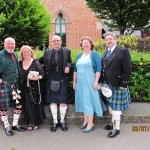
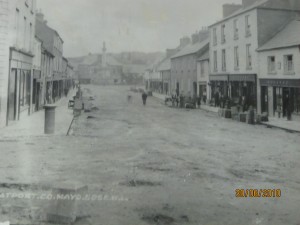
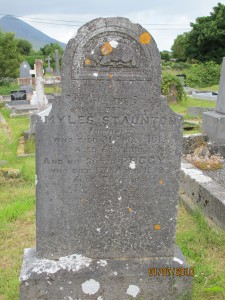
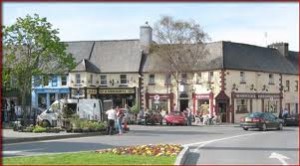

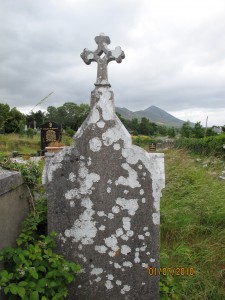
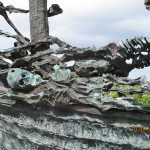
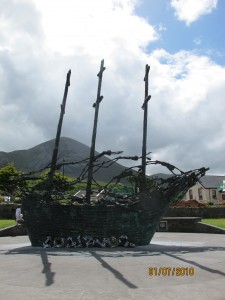
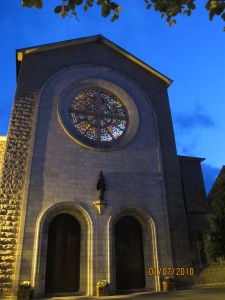
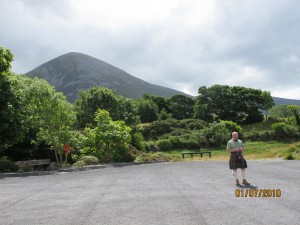
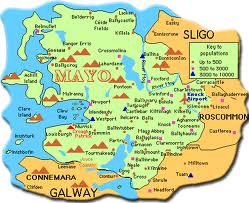
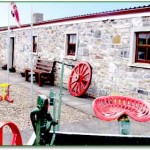
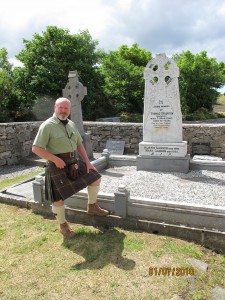
Hi Helen, Dennis
This is amazing, i was fascinated. We are going to florida in oct and i was planning on getting a tatoo and i’m now thinking i will get the stanton crest. Whoever put this together did a fantastic job, i knew about it through Mark. It was even great looking over the quiletti family and remembering peggy “grandma” as everyone got to call her. Thank you for doing this, it made my day. Love to you all i hope you are well.xxxx
My Great grandfather Patrick Staunton came to America in February 1867 with his wife Mary Linskey. Patrick was a baker with his father John in Westport county Mayo.
Thank you very for the info. There is no doubt that the family of Denis and yours would be connected. The town is very small and there would have been cousins, brothers, uncles and aunts all related.
Do you have any info about Patrick, his parents or anything you would like to share. We would be really pleased to hear from you. We live in Edinburgh, Scotland
Thank you for some other informative website. The place else may just I am getting that kind of info written in such a perfect means? I have a challenge that I’m just now running on, and I have been on the glance out for such information.king Regards Anette
hiya not sure if same family bur my great grandad,s mother was called bridget stanton she married a murray they had a son called william they moved 2 england just him and his mother bridget 2 burnley lancs joan
Hello There My Mothers Family came here from Ireland William Edward Diamond came from County Mayo. & My Anderson Family is From Galway & on my Fathers Side my Great Grandfather family was Patrick Williams Mayo. From County McCann, I think he said.
this is connected to the last comment I think the wording of Patrick;s name is wrong, I would guess it would be either Patrick William McCann of County Mayo or Patrick williams/ william McCann of County Mayo
I am a descendant of Nora Stanton who married a Thomas Diamond. They were the parents of John Diamond (born 1835) who married Ellen Tucker (born 1844). Ellen’s parents were Michael Tucker and Mary Lavelle.
All were from the same area of Cong, Mayo/Galway.
John and Ellen Diamond cameto the US and settled in Clarksburg, W. Va.
If anything I have written connects with what you know, please contact me at katherynbuckman@gmail.com or 618-910-0701.
I am a descendant of Nora Stanton who married a Thomas Diamond. They were the parents of John Diamond (born 1835) who married Ellen Tucker (born 1844). Ellen’s parents were Michael Tucker and Mary Lavelle.
All were from the same area of Cong, Mayo/Galway.
John and Ellen Diamond came to the US and settled in Clarksburg, W. Va.
If anything I have written connects with what you know, please contact me at katherynbuckman@gmail.com or 618-910-0701.
Hello Kathy. I will post your comment and hope that we get some interest. Congo is not too far from Westport and the families had much social interaction. I have not personally come across this branch but lets keep fingers crossed. Thanks Helen
Hello,
My family are from Ballydavock Drum and Patrick Staunton at Carrowstaunton in the above list would be a relative. Note we are Stauntons not Stanton and I’ve seen my own ancestors use both variations.
You can find me of Facebook Belcarra Genealogy Group.
Would love to get in touch with any relations. Thanks
Linda
Thank you so much Linda. I will go in and have a look on facebook. Would be great to link the families
Michael Horan who lived in Cloonkeen in 1857 was my great great grandfather. His son Patrick corn about 1837 in Aglish parish came to Scranton,Penn. and eventually settled in Rhode Island.
Hi, My great, great, grandfather John Stanton was born 1839 in Westport and married Mary Ann(she came from County Galway), then came to Stockport, Cheshire, UK, not quite sure when they arrived but they were first seen on the Stockport census of 1861, they both will have only been 22 yrs old, they had 7 children born here in Stockport this is the only information that I have on theses two,, Can anyone help?
can you help me please i was looking before about my great great grandad john joe stanton,he was from westport in co mayo,i was told his father was called patrick,patrick went too liverpool has anyone any information about him,his date off birth
his
i done mistake there can you delete my comment out of it please,ill type in new one
Do you know anything about why Austin Gannon and Mary Gannon were added to the burial?